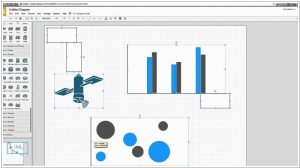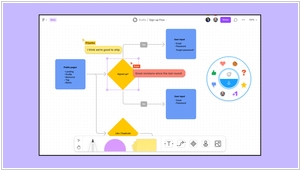Diagrams.net vs Figjam
July 20, 2023 | Author: Adam Levine
See also:
Top 10 Visual Collaboration software
Top 10 Visual Collaboration software
Diagrams.net (formerly known as Draw.io) and Figjam are both popular tools for creating diagrams and visual representations, but they have distinct differences in their offerings and use cases. Diagrams.net is a versatile and feature-rich diagramming tool that allows users to create various types of diagrams, flowcharts, and visualizations. It is known for its extensive library of shapes and templates, making it suitable for a wide range of use cases, from technical diagrams to business process flows. On the other hand, Figjam is a real-time collaborative whiteboard platform designed for creative brainstorming and ideation. It provides a flexible canvas where teams can sketch, create mind maps, and collaborate visually in real-time. Figjam's focus on fostering creativity and facilitating team collaboration sets it apart, making it an ideal choice for design teams, remote collaboration, and creative workshops.
See also: Top 10 Visual Collaboration software
See also: Top 10 Visual Collaboration software
Diagrams.net vs Figjam in our news:
2023. Figma sweetens FigJam whiteboard tool with new AI features
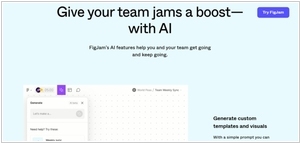
Figma has introduced new generative AI features to enhance its FigJam whiteboard tool, simplifying the initial setup and project organization process. One of these features is a tool designed to assist users in creating FigJam boards. Recognizing that the blank canvas can be overwhelming for beginners, Figma aimed to alleviate this challenge by implementing a generative AI tool. This tool enables users to initiate a new board by providing a description and listing essential elements such as a calendar and project timeline, making it effortless for users to start working on their FigJam templates or diagrams even when they are unsure of where to begin. After users have established a board, they typically employ digital sticky notes to jot down ideas, tasks, or anything else of relevance. However, as the board expands, managing these notes can become challenging. The company aimed to streamline this process by offering an easier method of organization. This involved categorizing the sticky notes into coherent thematic groups based on factors like subject matter or the individual responsible for completing a specific task.
2020. Draw.io's open source diagramming is moving to diagrams.net
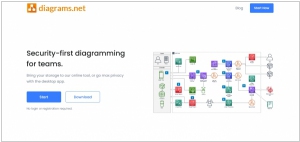
The widely used open-source diagramming web application, Draw.io, is undergoing a domain name transition, shifting away from its well-known .io domain to Diagrams.net. This change is motivated by the need to enhance security and uphold ethical practices. The decision to migrate stems from a security issue associated with .io top-level domains, compounded by a lack of communication from the domain administrator in addressing the matter. The absence of communication has eroded the trust of the diagrams.net development team in the .io TLD administrator. The transition process from Draw.io to diagrams.net will be gradual and extend throughout the entire year of 2020. During this transition period, the Draw.io domain will continue to host the diagramming web application without any redirections until the migration is fully completed.
2018. draw.io allows to automatically create diagrams from CSV files

Various departments and professionals within companies often deal with data presented in tables or spreadsheets, and converting that data into diagrams can enhance comprehension. Importing data into draw.io for visual representation is now a straightforward process. In this format, each row corresponds to a shape, while the columns contain the respective data for those shapes. It is important to note that not all columns are used as data within the diagram; some serve as instructions for shape formatting or act as identifiers for drawing connectors between shapes. Additionally, draw.io allows you to customize the formatting of the shapes according to your preferences.
2017. draw.io is now available as a Trello Power-Up
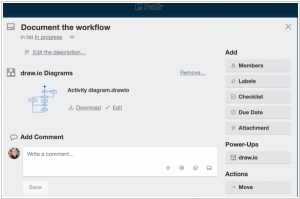
Now, keeping related draw.io diagrams alongside Trello tasks has become significantly easier. Instead of relying on shared folders, cloud file services, or cumbersome email exchanges, you can now embed one or multiple diagrams directly into any Trello card. This seamless integration allows for more efficient collaboration with your team. With draw.io, you have the flexibility to create various types of diagrams, including flowcharts, BPMN diagrams, mockups, wireframes, UML and ER diagrams, floor plans, electrical circuits, infographics, and more. The platform offers an extensive shape library, robust tools for importing diagrams in different formats, and securely stores all data within Trello.

